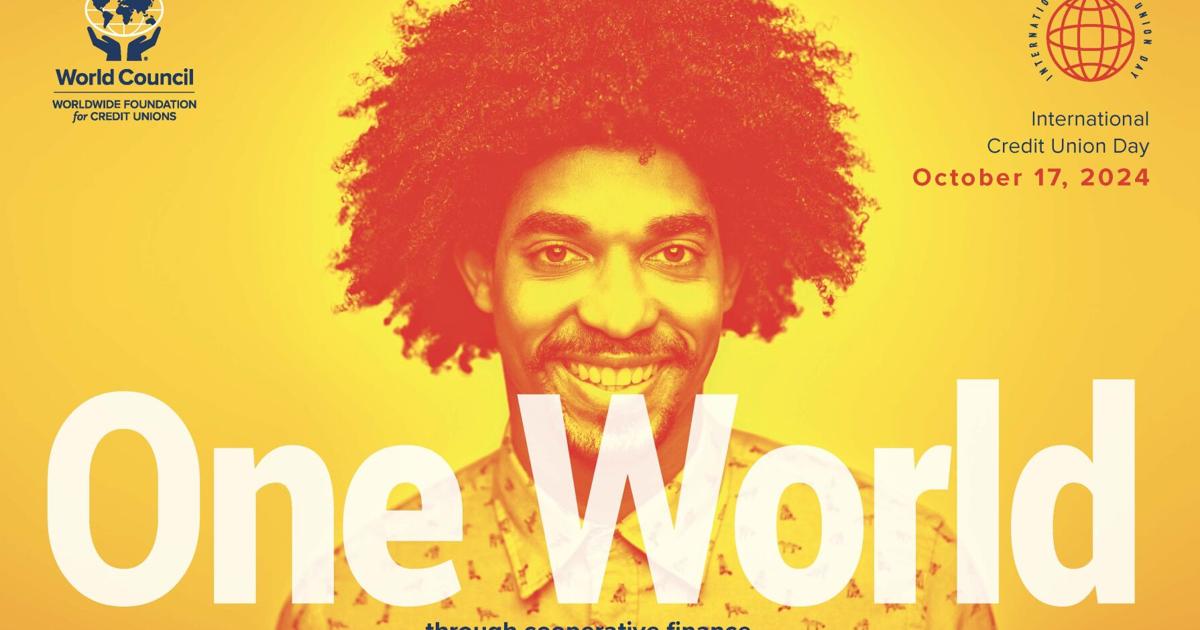International Credit Union Day highlights the vital role credit unions play in supporting their members and strengthening local economies By Rebecca Harris
In a world rich with financial service options, there is a model that puts the needs of the community first, gives every member a voice and reinvests profits back into local economies: credit unions.
As financial co-operatives, credit unions are owned by the people who bank with them. Operating under demographic ownership, all members have equal voting rights and an equal say in how their credit union operates. These unique financial institutions, which now serve 403 million members in 98 countries, are being celebrated around the world during the 76th annual International Credit Union (ICU) Day.
On Oct. 17, ICU Day will commemorate the spirit of the global credit union movement, which prioritizes profit for people. Since 1948, ICU Day has reflected on the movement’s history, promoted its achievements, recognized hard work and shared members’ experiences. Around the globe, credit unions and financial co-operatives will mark the day through fundraisers, open houses, contests, parades, volunteering and more.
Why is this long-standing celebration so meaningful – and how has it endured? According to Jeff Guthrie, president and chief executive officer of the Canadian Credit Union Association, ICU Day is a powerful reminder of the global impact of co-operative finance.
“For 76 years, this day has celebrated the essence of what makes credit unions unique – our commitment to community development, member-centric service and financial inclusion,” he says. “It’s an opportunity to recognize the tremendous work that credit unions do every day, not just here in Canada but around the world.”
Putting members at the heart of everything
Central to the success of credit unions is a member-centric approach. While Canadian credit unions are well-regulated and offer a full range of financial products, their personalized service truly sets them apart. This approach allows credit unions to gain a deep understanding of each member’s financial goals, allowing them to determine the right banking products and services to help members build a brighter financial future.
Credit unions also ensure financial inclusion by delivering products and services to underserved communities and people of all income levels. With community at their heart, credit unions are committed to contributing to their communities’ economic and social well-being. According to CCUA’s 2023 ESG Report, an average of 5.4% of Canada’s credit unions’ pre-tax income went to community donations and sponsorships, contributing $56 million. Credit unions are also proud supporters of local businesses in communities across Canada and are leaders in small business lending.
“Credit unions play an essential role in ensuring financial inclusion and education for all Canadians,” Guthrie says. “This International Credit Union Day, we celebrate the democratic, community-focused approach that makes our sector resilient. Credit unions don’t just provide financial services – they empower individuals and uplift entire communities.”
Joining together in the face of uncertainty
Credit unions have a longstanding history of stepping up for members and communities during challenging times. With the theme One World Through Cooperative Finance, this year’s ICU Day aims to show how the movement brings people closer together in today’s divided times through democratic, community-focused finance.
“The theme One World Through Cooperative Finance reflects our core belief that financial services should unite rather than divide,” Guthrie says. “Credit unions work tirelessly to strengthen local economies by putting profits back into their communities. Especially in challenging times, our co-operative model offers a reliable foundation that helps people meet their financial goals.”
From food scarcity to housing challenges, Canadian credit unions have been there for their communities. For example, in 2023, Affinity announced its commitment of $250,000 to the Saskatoon Food Bank & Learning Centre’s Plant Possibility Campaign. This funding will contribute to a new, central facility that will optimize its operations and enhance its ability to address hunger.
To help address the housing crisis facing many Canadians in Manitoba, Kootenay Savings Credit Union donated $10,000 to support the Lower Columbia Affordable Housing Society’s Fruitvale Affordable Housing Project to help with the development of affordable housing units in Fruitvale, Manitoba. The new build will go towards building 31 units of varied affordable housing in the Fruitvale community.
As credit unions continue to make a positive impact in Canada and around the world, ICU Day offers a chance to take pride in the essential role they play in members’ lives. As they look to the future, credit unions remain dedicated to uniting communities and building a better financial future for everyone.
